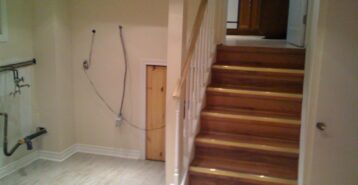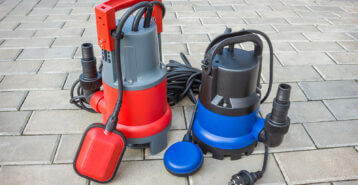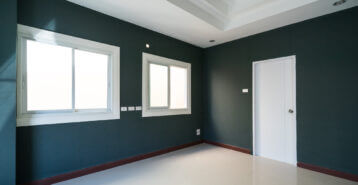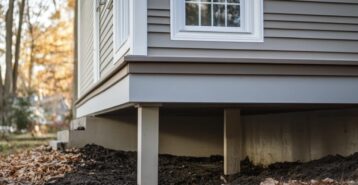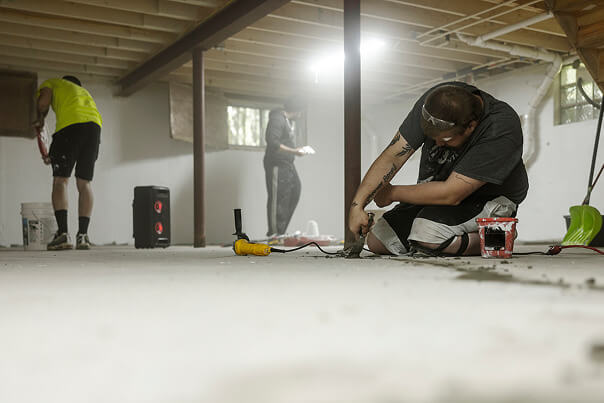Exterior Basement Waterproofing: A Comprehensive Guide
Exterior basement waterproofing is the process of sealing your foundation from the outside to keep water out. Unlike interior methods, which manage moisture after it enters, exterior waterproofing prevents water from ever reaching your basement walls.
To achieve this, contractors may excavate around the foundation, apply waterproof membranes, install French drains, or regrade the yard to divert water away. In terms of cost, homeowners typically spend $5,000 to $20,000 on exterior basement waterproofing, depending on the project size and complexity.
While the work is more disruptive than interior solutions, the benefits are significant. Exterior waterproofing protects your foundation from water damage, reduces the risk of mold, and helps keep your basement dry.
In this guide, we’ll explain how exterior basement waterproofing works, what it costs, and the main factors that affect pricing.
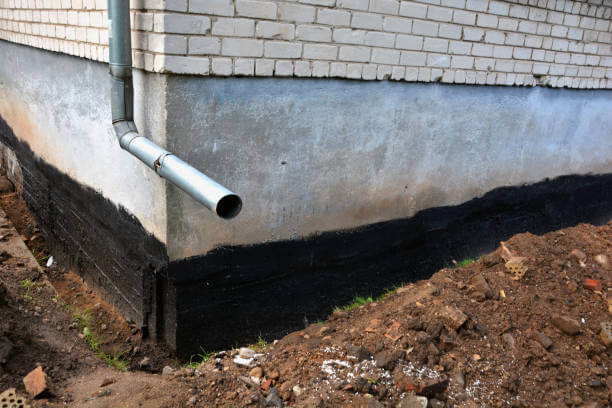
How Does Exterior Basement Waterproofing Work? Step-by-Step
Exterior basement waterproofing works by sealing the outside of your foundation and redirecting water away before it enters your basement. The process usually includes inspection, excavation, applying waterproof materials, installing drainage, and regrading the yard.
It is one of several methods available and involves steps to inspect, prepare, and protect your foundation. See our guide on basement waterproofing methods for a comparison of all methods.
Here’s a closer look at the process:
1. Inspection and Assessment
First, contractors evaluate the basement and foundation. A professional inspects cracks, looks for water entry points, and checks for mold or mildew. They also examine the yard around the home to spot drainage problems, such as clogged gutters, short downspouts, or poor grading.
2. Excavation
Next, the soil around the foundation is excavated. This exposes the basement walls so contractors can apply waterproofing materials directly to the exterior. Excavation is one of the most labor-intensive steps, and it often adds a large portion to the total cost.
3. Applying Waterproofing Materials
Once exposed, the foundation is treated with waterproofing products. Common methods include:
- Waterproof Membranes. Flexible materials, often rubberized or bituminous, are applied to exterior walls to create a watertight seal.
- Cementitious Coatings. These bond to the foundation and are great for preventing moisture penetration.
- Sealants and Tar Coatings. Use a layer of tar or other sealants, which is applied to the foundation to provide an impermeable barrier.
4. Installing Drainage Systems
To prevent basement leaks, proper drainage is critical. After applying waterproof coatings, contractors often install a French drain or drainage pipe at the base of the foundation. These systems collect and redirect water away from the house. Extending downspouts and adding gutter improvements can also help reduce pooling near the foundation.
5. Yard Grading
Additionally, the soil around your home may need regrading to direct water away from the foundation. This usually means adjusting the slope of the yard. In some cases, contractors add topsoil or sand to improve runoff.
» Learn more about Lawn Leveling and Yard Grading
6. Backfilling
Finally, the excavated soil is replaced. Contractors compact the soil to secure the waterproofing materials and stabilize the yard.
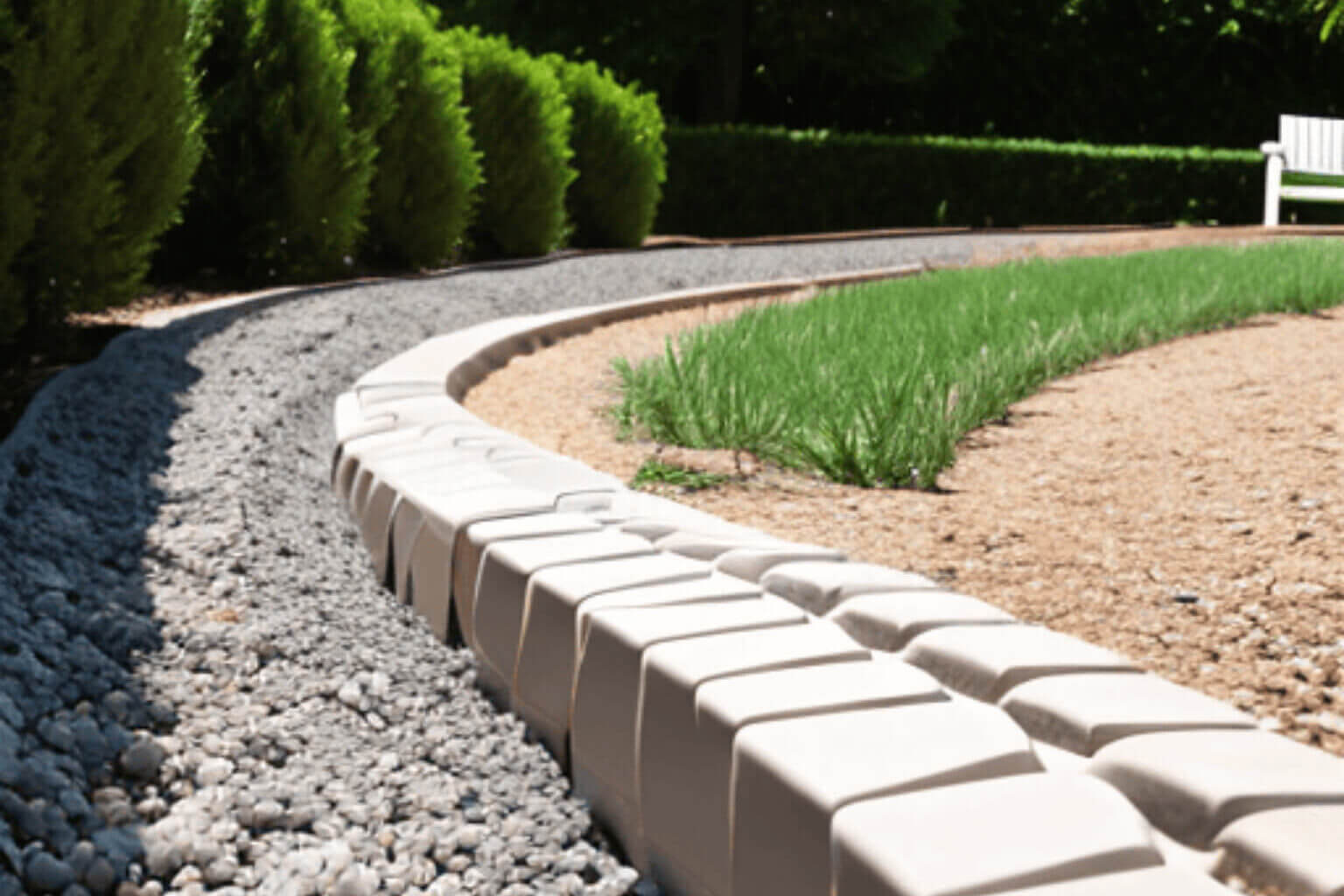
Can You DIY Exterior Basement Waterproofing or Do You Need a Professional?
Most exterior basement waterproofing projects should be handled by professionals because they require excavation, heavy equipment, and specialized expertise. Small interior fixes may be DIY-friendly, but exterior solutions are rarely safe or effective without a contractor.
Moreover, working around the foundation poses safety risks, and mistakes can cause serious damage. Professionals know how to diagnose water problems, design the right solution, and install it correctly. Additionally, many contractors include warranties with their work, giving you extra peace of mind.
Hiring a professional costs more, but in most cases, it’s necessary — and well worth the expense.
How Much Does Exterior Basement Waterproofing Cost?
On average, exterior basement waterproofing costs between $5,000 and $20,000, depending on the basement size, materials, and project complexity. Excavation and drainage systems are usually the biggest cost drivers.
Here is a breakdown of the typical costs:
| Step | Cost Range |
|---|---|
| Excavation | $2,500 to $8,000 |
| Waterproofing Membranes/Tar Coating | $3 to $10 per square foot |
| French Drain Installation | $4,000 to $15,000 |
| Yard Regrading | $1,000 to $3,000 |
| Labor | $100 to $200 per hour |
What Factors Affect the Cost of Exterior Basement Waterproofing?
Several factors influence the final cost of exterior basement waterproofing:
- Size of Basement. Larger spaces require more excavation, labor, and materials.
- Local Labor Rates. Labor costs vary by region. Urban areas often charge more than rural areas.
- Repairs for Existing Damage. Cracks or structural issues must be repaired before waterproofing, which adds to costs.
- Permits and Inspections. Homeowners often need local permits before excavation. Inspections and fees can add several hundred dollars.
- Type of Waterproofing. Advanced methods, such as French drains or high-quality membranes, cost more than simple coatings.
Other cost considerations, like financing and rebates, are covered in our basement waterproofing cost guide.
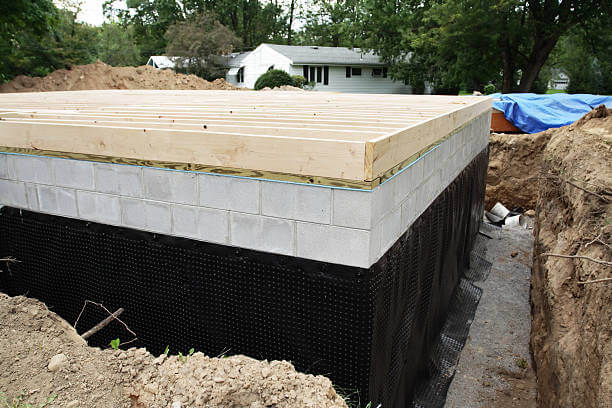
How Exterior Waterproofing Saves You Money
Although the upfront cost may seem high, exterior basement waterproofing often saves money in the long run. Here are a few ways it pays off:
- Energy Efficiency. A dry, sealed basement helps regulate indoor temperatures, which lowers heating and cooling bills.
- Government Rebates. Some states and cities offer rebates or tax credits for energy-efficient improvements. Waterproofing may qualify.
- Financing Options. Many contractors offer financing plans to make upfront costs more manageable.
- Quotes. Get at least three or four quotes so you can compare prices and choose the best fit.
» See our top picks for the best basement waterproofing companies.
Who Needs Exterior Basement Waterproofing?
Exterior basement waterproofing is especially important in wet climates. Homes in areas with heavy rain, flooding, or snowmelt benefit the most. Houses with older foundations, poor drainage systems, or active water problems also need this type of protection.
Signs Your Basement Needs to Be Waterproofed
Certain warning signs show when your basement may need exterior waterproofing, including musty odors, visible cracks, and mold growth. For a detailed checklist, see our guide to the 8 signs your basement needs waterproofing.
Is Exterior Basement Waterproofing Worth It?
Yes, exterior waterproofing is often worth it for homes with recurring leaks, foundation cracks, or high groundwater. It protects your home’s structure, prevents mold, and increases property value.
For a complete breakdown of ROI and long-term benefits, see Is Basement Waterproofing Worth It?
Compare top-rated foundations pros in your area.
Read real homeowner reviews, explore qualifications, and view promotions. Modernize makes it easy to browse professionals and find one that will be perfect for your project.



